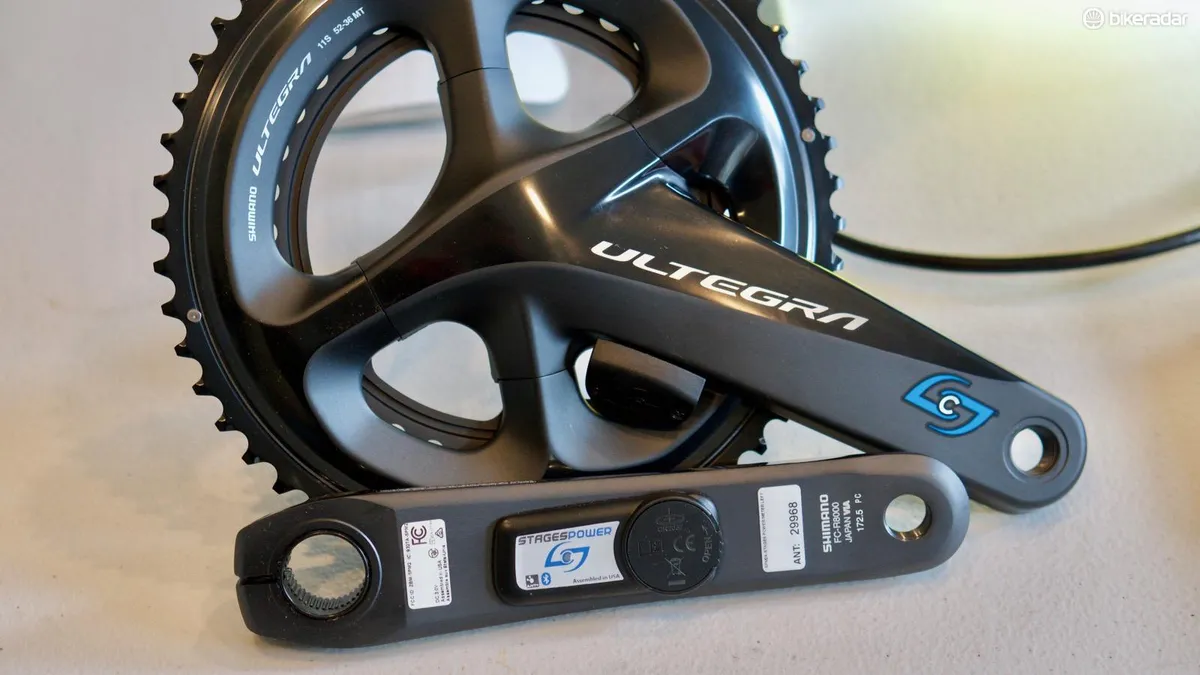After months of testing against other meters and smart trainers, the Stages Power LR Ultegra has proven itself to be a dependable dual-side power meter. With this third-generation meter, Stages has fortified areas of past weakness, including water ingress and a weak radio that caused data drops. Most important, the data is reliable in that it tracks well against other trusty meters and, unlike some left/right meters, both cranks measure similarly regardless of conditions.
Who to believe?
Testing power meters against each other is a funny thing — which one do you believe? As in politics, democracy in meter testing ain't a perfect system, but it's better than the alternatives. My system is to ride with at least three meters concurrently, using the same type of head unit with standardized recording settings. I then look for alignment or deviation at the macro and micro levels. I used a PowerTap wheel, Vector 3 pedals, a Tacx Neo and and Wahoo Kickr for most of my comparisons.
The seemingly easiest comparison is average power. But even that can be tricky, as analysis will vary based on which software you use. For instance, TrainingPeaks takes the average power number straight from the head unit, which can make some assumptions about the data where there is a zero or a null value, whereas Today's Plan will discard any null values. I use both software systems.
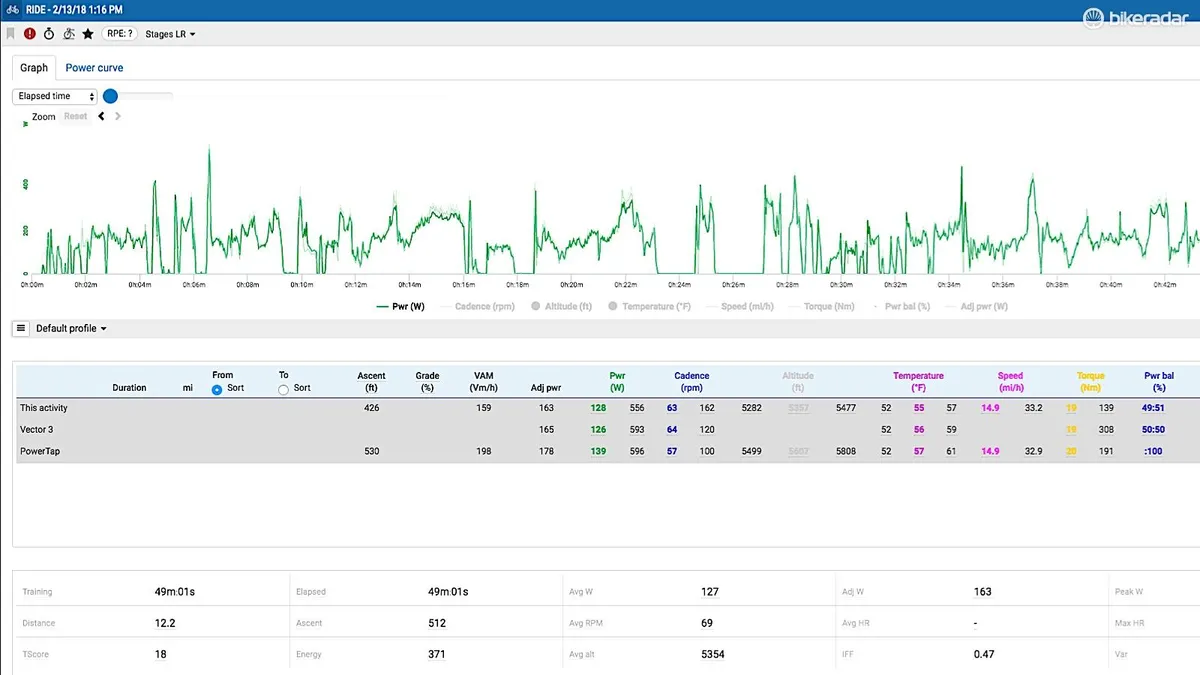
I also like to overlay the power files from three meters taken from the same ride, and look for spots where one meter spikes or drops in relation to the other two. Now, some drops can be caused by a head unit not catching the meter's signal — I've done tests with one meter and multiple Edge head units where average power will vary by a watt or two.
I ride about 11,000 miles a year, and usually have at least one meter on my bike. I don't do a huge amount of riding in the rain, but rides with big swings in temperature are fairly common. Besides TrainingPeaks and Today's Plan, I keep track of multiple-meter rides on a spreadsheet with a few values from each ride, plus ride notes.
All that to say, I try my best to test with due diligence on power meters before doing a full review.
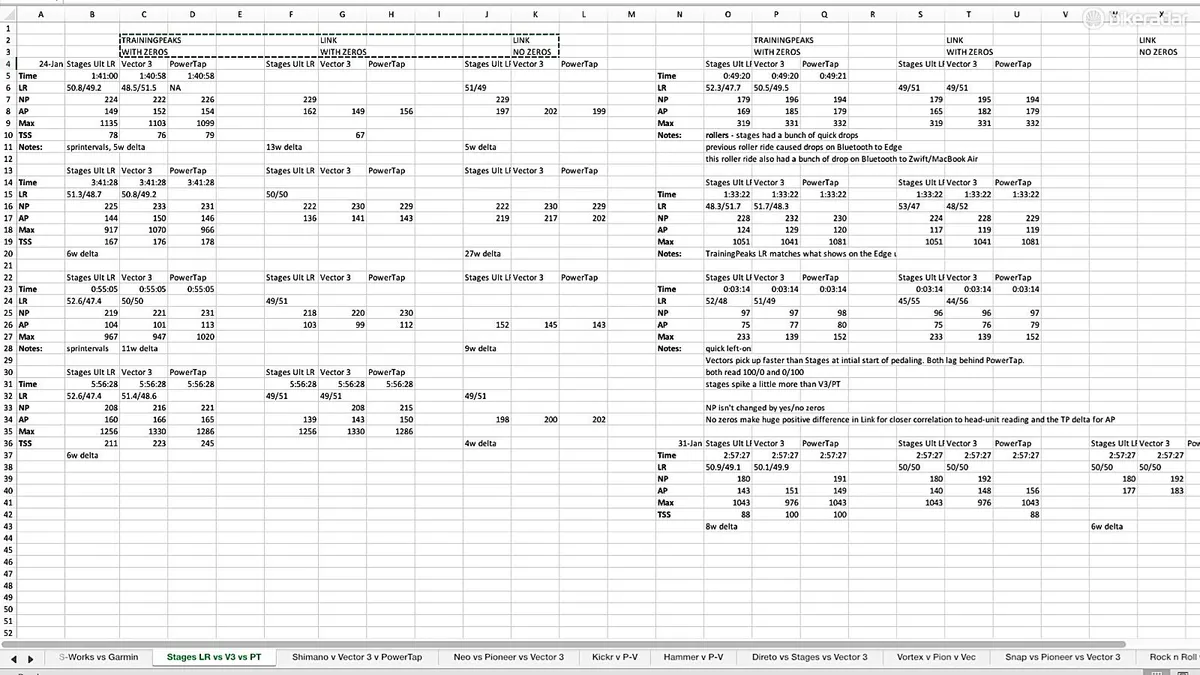
Power data tracks reliably
When compared to other trusty meters, the Stages Power LR Ultegra tracks reliably. Over dozens of rides, it was usually in close alignment to the Vector 3 pedals, with both the Stages and the Vectors tracking in parallel but a little under the PowerTap. Usually, the three meters would average within about 5 watts of each other for hour-plus rides that averaged 140-170w.
Zooming in and out on various rides with the three meters overlaid, I could occasionally find spots where one meter or another would stray slightly for a second. But nothing of concern, like some past Stages meters where the data would just drop out for a few seconds (more on that below).
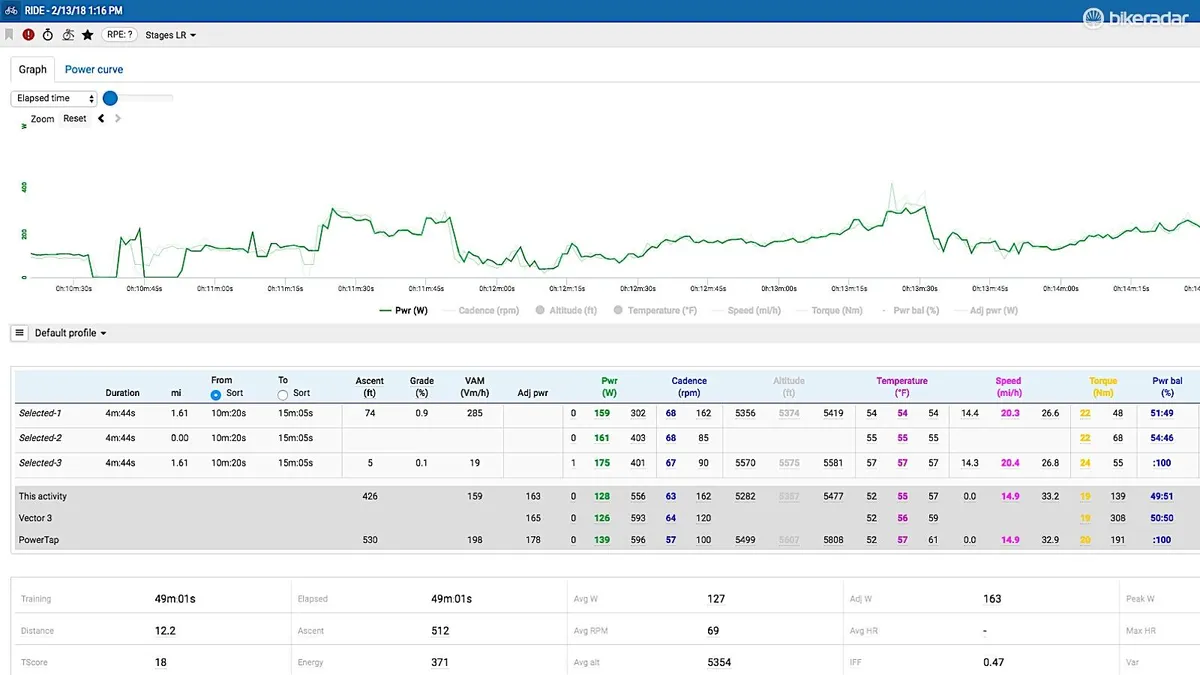
The Stages and the Vector both rely on accelerometers for cadence information, which also figures into the power equation, as power is force multiplied by velocity. (Stages was the first to eliminate the need for affixing a magnet to your frame for cadence.)
The two meters track right on top of each other for cadence readings, although the Stages is a split-second slower to initially pick up. Both lag behind the PowerTap for near-instant readings. But once you are actually pedaling, it's a non-issue. I just mention this as riders new to training with power will sometimes express frustration that their computer doesn't alight with data before they have completed a single pedal revolution.
The Power LR — as with the Vector 3 and the PowerTap hub I used — has active temperature compensation, meaning it will measure accurately when the temperature changes. (For context, SRM, the original pro-level power meter, initially came with instructions to set your bike outside for a few minutes then do a zero offset for accurate measurement — and then reset it again later if the temperature changed.) In my testing, both the Shimano meter and the Specialized carbon meter drifted a bit on longer rides that started cold then warmed up.
The bottom line is the Stages Power LR data is reliable, whatever the weather.
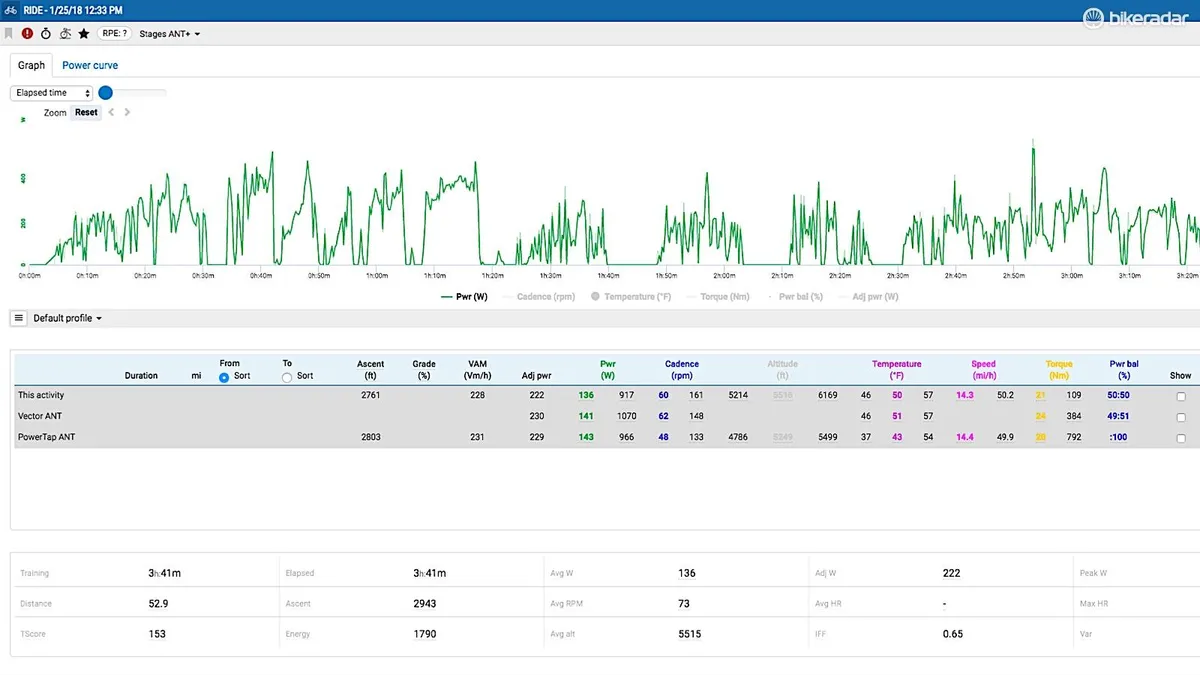
Left/right is balanced
In my experience, only Garmin's Vector 3 and the Stages Power LR consistently measure left/right power in a reliable way.
I have tested a few actual left/right meters and a number of meters that guesstimate left/right, and the results are often disappointing. Here's the deal — a true left/right meter is actually two power meters. As all meters have some degree of variability, and most meters have their own personality in terms of reading a little high or a little low compared to another meter.
If you have used more than one meter, you have probably noticed discrepancies between the two. For instance, some riders had a PowerTap meter for years, then bought another meter and thought, 'hey, this meter is higher/lower'. Now imagine one of those meters on your right leg and the other one your left.
In my experience, Shimano's new power meter is good as a whole, but the left/right readings are skewed, rendering any left/right data useless. The two sides simply measure differently. In testing Specialized's Power meter with carbon cranks, the left/right balance would vary, sometimes skewing as much as 60/40 on longer rides (when Vector 3 pedals stayed closer to 50/50). It's been a while since I've ridden a Pioneer unit; my experience with their initial meter was very poor, but I understand they have improved since.
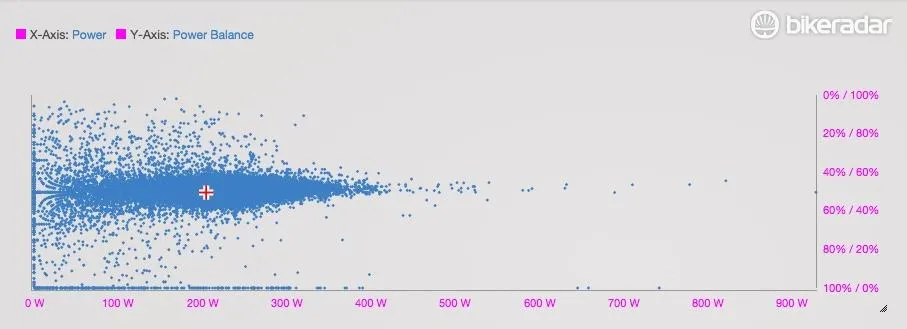
Now, a few systems like Quarq and even SRM give left/right numbers despite not measuring separately; they just chop the pedal stroke in half and make assumptions. This may satisfy demand for left/right data — and both units do accurately capture total power output — but they simply are not measuring left and right power.
I test for left/right in a few ways. One, just riding and looking at data after the fact, ideally when comparing against another left/right system. Two, I do one-legged drills. If I get anything but 0w for the non-pedaling leg (looking at you, Specialized, nevermind any guesstimate left/right system) then there is clearly a problem. And finally, I do one-legged drills with a control meter at the hub like a PowerTap or a smart trainer. If one side reads higher than the other when using the control meter to standardize the effort, then again there is a problem.
With the Stages Power LR, there is no problem. The left side reads the same as the right.
One little benefit to the Power LR system is that, should one side drop out from a dead battery or anything else, the other side will — after waiting a few seconds to confirm — double the power reading so you are still getting usable data to train with.
Now, as for what you actually do with left/right data, well, that is another question, and one for which I don't have any good answer.
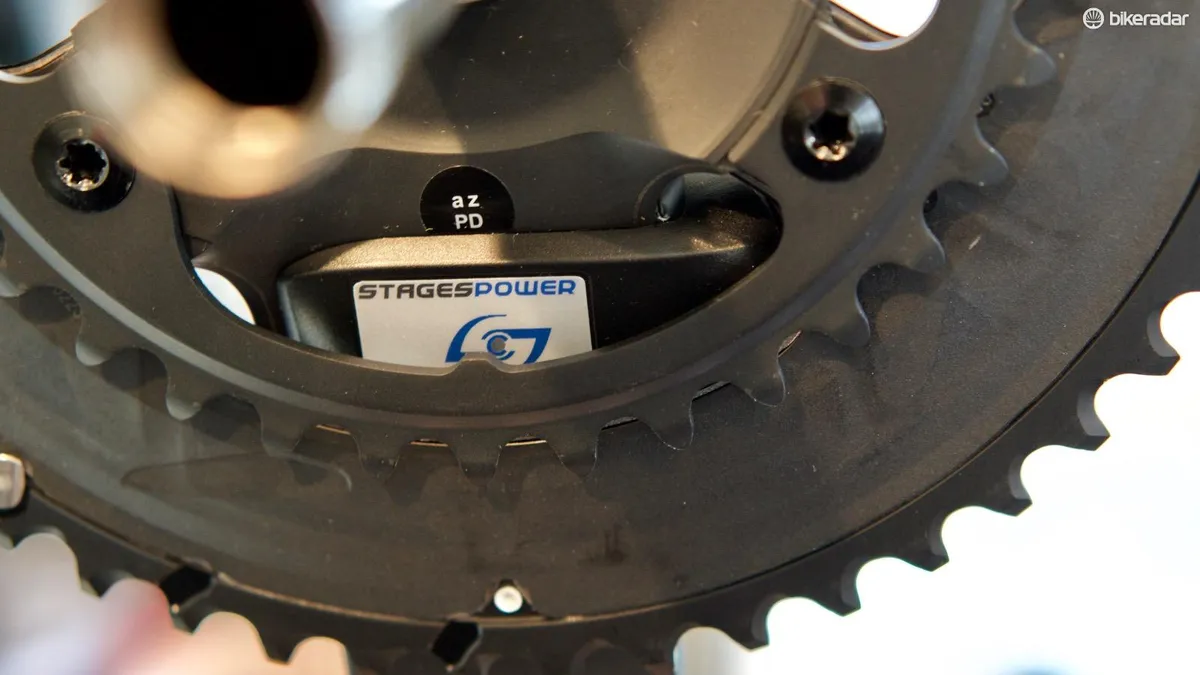
Two meters in one
One cool thing about the Power LR being two power meters is that, well, you have two power meters to work with. Since you're probably buying a meter to go onto an existing bike — and that bike probably already has a crank on it — then you have options.
I've used the Power LR primarily as a dual-sided unit, but have also split it apart to use on test bikes. The easiest thing to do is pop off the left crank and install it on another bike. This involves the Shimano pre-load tool, a 5mm Allen and a pick. I've used the left crank for various test bikes, including when I'm traveling. I've also used the right side for gravel bikes that don't have enough left-side clearance for the left meter, such as the Trek Checkpoint. This was a little more involved, as it meant switching chainrings, but that option is still a plus in my mind.
To split the meter into two, you use the Stages Link app, which you also use to update firmware on the meters, check battery life and do zero resets (which you can also do on any modern head unit).
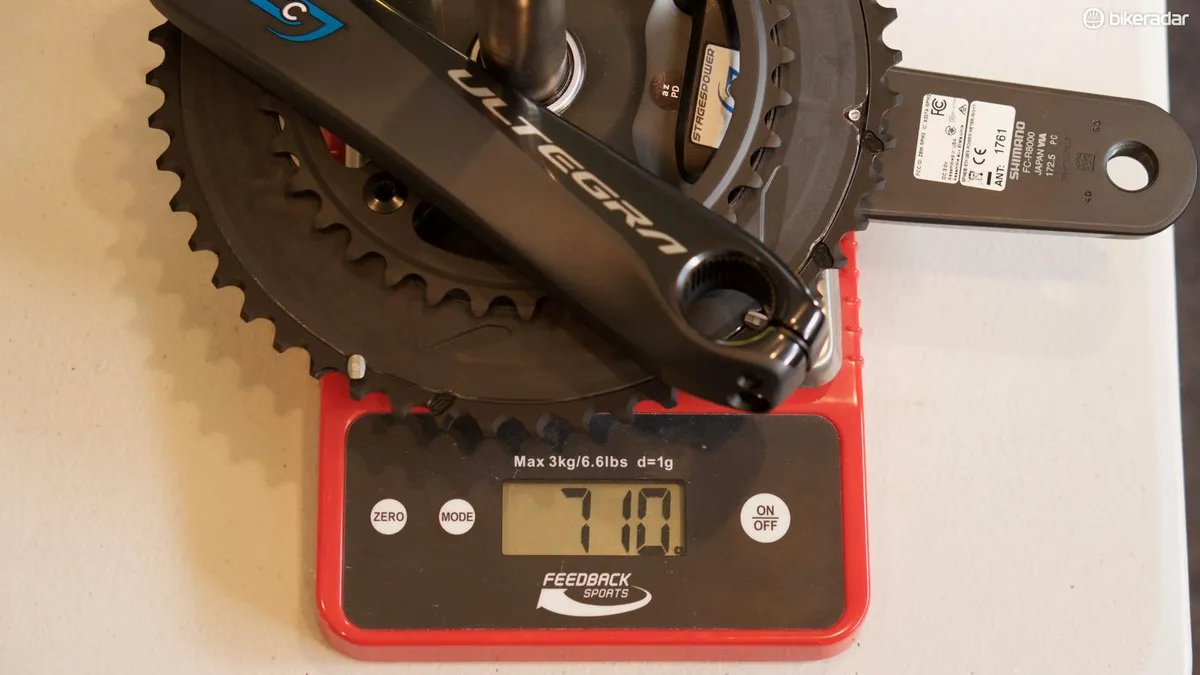
Early firmware wrinkle ironed out
The one problem I initially found with the Power LR was a weird one — when riding the rollers and using the meter for Zwift, the power signal would occasionally drop out on both Bluetooth and ANT+, which was maddening. A firmware update eliminated that problem, though, and it's been smooth sailing since.
Old ghosts exorcised
Speaking of signal drops — those on-screen zeroes were the primary problem with the second generation Stages meters when using newer Garmin Edge units out on the road. Garmin blamed Stages, and Stages blamed Garmin, but the end result was often frustration for riders who used both.
Devilish details of Froome's TdF Pinarello — old Garmin with Stages meter
Similarly, while Stages was one of the first meter companies to offer power on Bluetooth — allowing you to use your phone for recording, among other benefits — I found that the original BT signal was weak, too. I would fire up Strava, connect the Stages and a BT heart-rate strap, see that everything was recording, then put the phone in my jersey pocket. At the end of the ride, I'd see that power hadn't always been recording, as my body seemed to provide enough of a block to shield the signal.
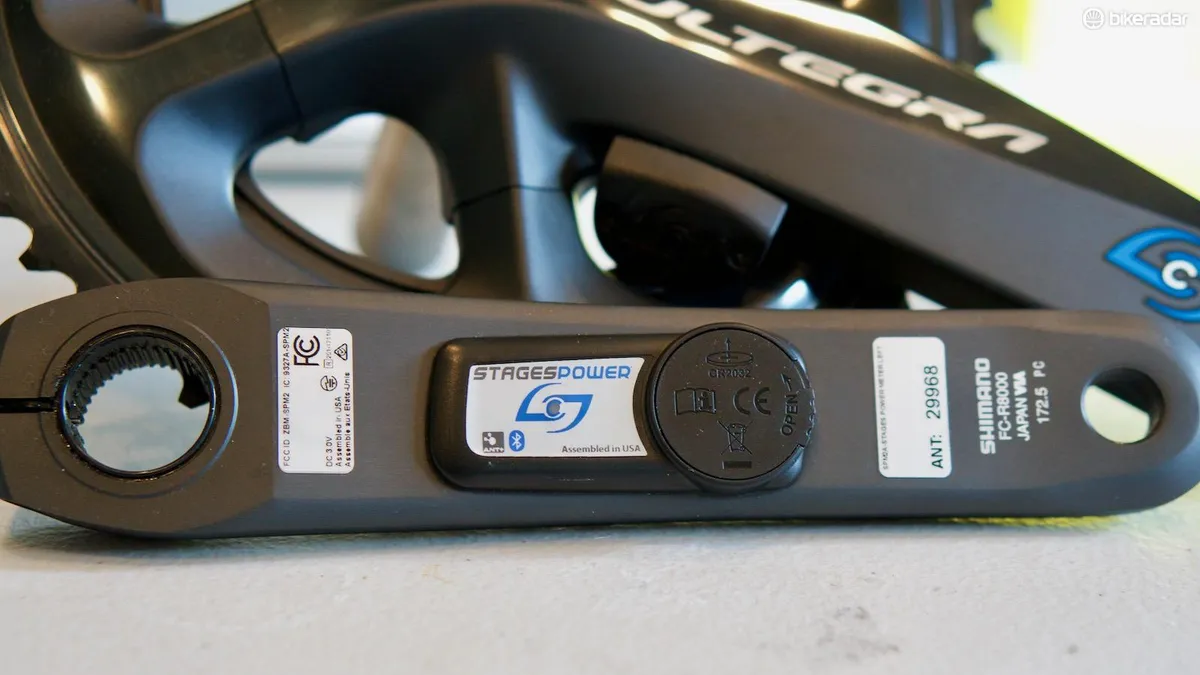
Stages claims its generation 3 signal is six times stronger. In my experience, the drops are gone — testing on a slew of Edge units (520, 820, 1000, 1030) plus an ANT+ dongle and Bluetooth on a MacBook air and my iPhone.
The first generation Stages meter was excellent in that it was such an easy power solution for Shimano users. Just swap the left crank and you're off to the races. But... many riders, including this one, found water to be the meter's Kryptonite, as it could leak in around the battery and kill it. Stages fixed this with the second generation housing, but the reputation has haunted the brand a bit. Partially to test and partially because I'm lazy, I power-washed the meter dozens of times with zero issue.
Good battery life
The Power LR has a new housing with a little LED to communicate battery life and a complete zero offset. It's a gratifying little feature.
Stages claims battery life on the little CR2032 coin cell to be 175 hours or more. That seems about right. I get at least a couple months' use before I lose track. Most newer head units including all the Edge computers will give you a low-battery warning well in advance of the thing dying on you.
It's fairly easy and cheap to change the CR2032; unscrew the housing and be careful not to lose or scrunch the thin yellow washer. It's tool-free on the left side and needs a little Phillips screwdriver on the right side.
Would a rechargeable system be better? I don't know if plugging in each crank would be more or less awkward than changing batteries. Maybe one day we will get to the point of our bikes having a single rechargeable battery that power the drivetrain, power meter, head unit and lights. In the meantime, a CR2032 is pretty easy to deal with.
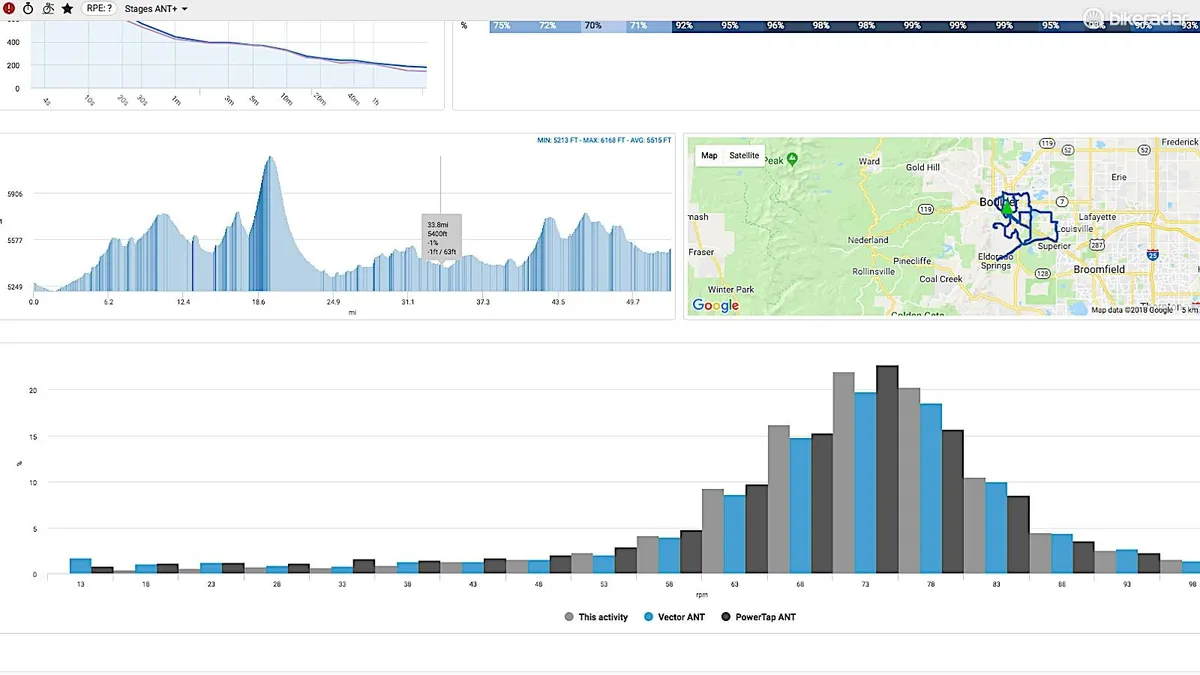
Bottom line
You've probably read and heard a lot about the importance of a power meter being reliable one day to the next. And for good reason; the whole point of the tool is to be a dependable system of measurement. You have probably also heard or experienced how power meters don't often align with each other. With true left/right meters, you have two meters to work with, so it's vital that they measure in parallel. In my experience, this isn't easy for meter brands. In light of all that, the Stages Power LR is one of the best left/meter meters available. It is dependable hot to cold, Monday to Sunday and left to right.
